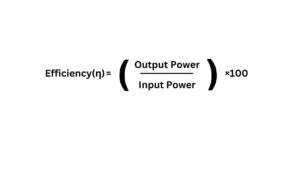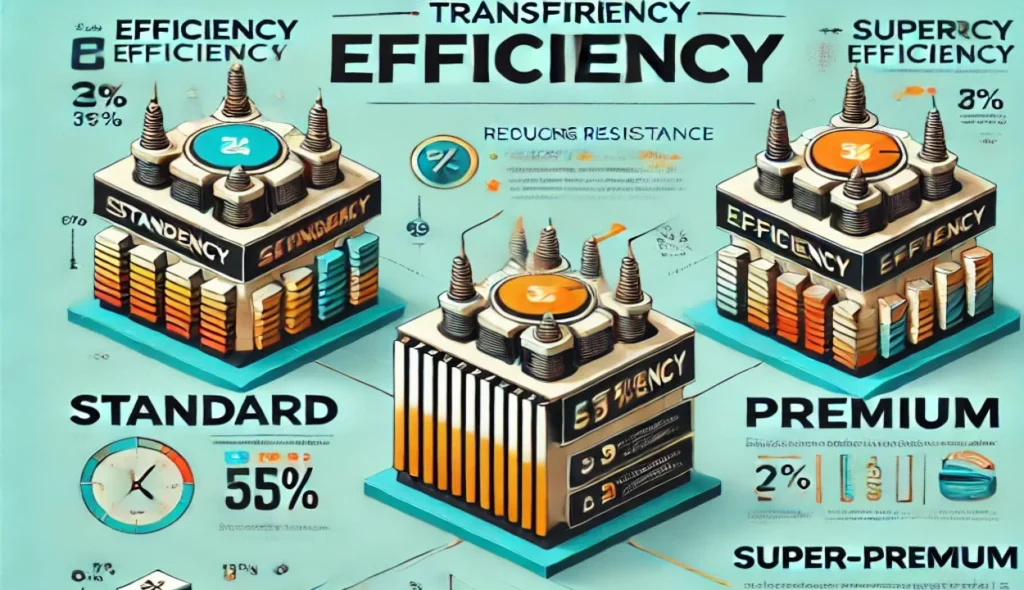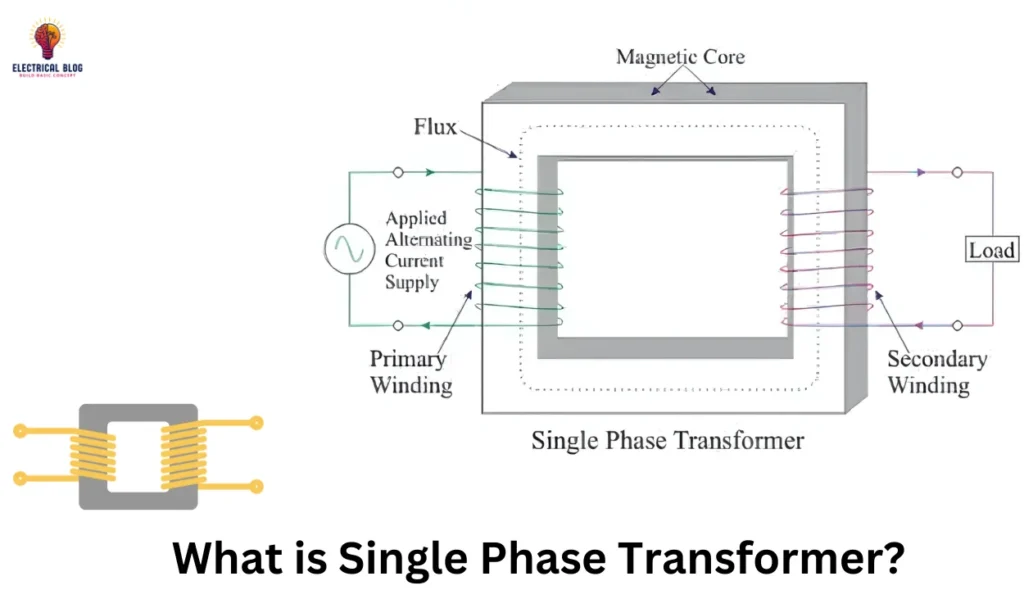Introduction
When discussing transformers, one key aspect to consider is their efficiency in daily operation. These devices are designed to be highly reliable and efficient, ensuring minimal energy losses. Since a transformer is a static unit with no moving parts, it remains rugged and durable, reducing the chances of wear and tear over time. However, some power is inevitably lost due to factors like resistance and magnetization effects, which occur naturally during use. To truly learn about these challenges and how to maintain performance, exploring a comprehensive guide can be beneficial. Many FAQs address common concerns about energy transmission and ways to optimize transformers for long-term use.
What is transformer efficiency?
To truly gain an understanding of how a transformer works, we need to look at its efficiency, which is the ratio of output power to input power. A highly efficient transformer effectively converts electrical energy from one form to another, often in DC or alternating current systems. The measures of efficiency are expressed in percentages, typically within a range of 97% to 99%. Several factors can influence its performance, including size, type, and load. Over time, losses may increase, requiring the transformer to be repaired or even replaced. Determining these losses is essential to ensure smooth operation, as inefficiencies may lead to performance issues if not properly managed.
Understanding the Transformer Efficiency Formula
To find the efficiency of a transformer, we use a simple formula:
η = Pout / Pin × 10
Here, Pout represents the output power, and Pin refers to the input power, both measured in watts (W). The efficiency is expressed as a percentage, showing how well the transformer converts energy while minimizing loss. For example, if a transformer has an output of 1,600 watts and an input of 1,650 watts, its efficiency is 96.96%. To execute the calculation, divide the output by the input, then multiply by 100 to get the final result. Understanding these effects is crucial for optimizing performance.

What’s the single-phase transformer efficiency?
When designing a single-phase transformer, it is critical to construct it in a way that ensures maximum efficiency at the right load. The efficiency typically ranges between 95% and 98.5%, but it can decrease if the transformer is heavily underloaded. The optimum performance occurs at approximately 75% to 80% of the rated capacity, beyond which losses start to dominate. The size of the transformer also depends on its purpose, especially in distribution systems where balancing load is essential for efficient operation. An ideal setup ensures stability while preventing reduced efficiency over time. You can also read Center-Tapped Transformer.
Can a transformer be 100% efficient?
No transformer is 100% efficient because losses always occur during operation. Some energy is lost in the core due to hysteresis and eddy currents, while resistance in the windings causes copper loss. These factors prevent transformers from working perfectly without any waste.
Hysteresis loss
One major reason for losses is magnetization reversal in the iron core, which leads to heating. This process, known as hysteresis, is affected by the grade of iron and the flux density. The Steinmetz formula helps in determining this type of loss.
Eddy current loss
Another cause of energy loss is eddy currents, which form in the core due to alternating AC flow. This unwanted motion of electricity produces heat and reduces efficiency. DOE standards help reduce such losses in modern transformers.
Copper losses
In addition, copper losses occur because of the I²R effect, which is caused by electrical resistance in the windings. These losses increase when the transformer is fully loaded or under a short-circuit condition. Engineers use the open-circuit and short-circuit tests to measure these losses.
Dielectric loss
Other losses include dielectric loss in the insulation and stray-load losses due to leakage flux. The Bmax value and Vm3 of the core also impact efficiency. While improvements are made, eliminating all losses is impossible.
Why is the efficiency of transformers high?
One of the main reasons why a transformer has high efficiency is its ability to convert electrical energy with minimal losses. The core is made from a special material that reduces hysteresis and eddy current effects. Additionally, the windings are made of copper, which has very low resistance, allowing devices to operate efficiently with a relatively small loss of power in the form of heat. You can also read transformer maintenance.

What Affects Transformer Efficiency?
The Heating Effect of Coil Current
When current is flowing through a transformer, heat is generated due to the I²R effect, where R represents the resistance of the coil. If this heat is not dissipated into the surrounding environment, it can become damaging to the system. Using thick copper wires and a heat-resistant design can help increase efficiency by reducing power loss. Additionally, applying a coolant can lower the temperature, preventing overheating and ensuring smooth operation.
Heating from Induced Eddy Currents
When a transformer operates, eddy currents are induced in the core due to the changing magnetic field from the primary winding, which then interacts with the secondary side. This process creates heating and energy loss, reducing overall efficiency. Using a laminated iron core with an insulated layer of enamel paint helps prevent the excessive flow of these currents. The high-resistant material further reduces the effect, helping to increase the performance of the transformer.
Magnetization of the iron core
A transformer must constantly go through magnetization and demagnetization of the iron core to produce a changing magnetic field in the secondary winding. This process requires a lot of energy and can lead to high expenses and waste. To reduce this loss, using an amorphous metal alloy is effective, as it has a crystalline structure that minimizes hysteresis effects and improves efficiency.
Flux Leakage
A portion of the induced flux from the primary coil is not fully transmitted to the secondary, causing a decrease in efficiency. This happens when the electromagnetic flow is disrupted due to air gaps in the core, allowing some energy to leak. To reduce leakage, the transformer should be tightly wound, ensuring the winding properly intertwines and forms a closed loop within the iron structure so that all energy is utilized effectively.
How to Improve Transformer Efficiency?
A transformer can never be 100% efficient, but you can improve its efficiency by reducing resistance in the coil and enhancing flux coupling. Adding insulation to the loop area and optimizing the primary and secondary windings can help manage the current flow and prevent losses in its state.
Loop Area Insulation
Proper insulation in the core is necessary to reduce the impact of eddy currents, ensuring the current follows its intended path. By insulating the sheets between the primary and secondary windings, the flow of electricity is controlled, preventing unwanted energy loss. This helps the transformer increase its efficiency and overcome the negative effects that make it work harder to maintain performance, leading to a better result.
Primary & Secondary Coil Resistance
To improve efficiency, the resistance of the primary and secondary coils should be kept low to prevent heating losses. A high resistance can cause the transformer to lose more energy in the form of heat. Using a coolant can lower the temperature and maintain stable performance.
Flux Coupling
A transformer must have tight flux coupling to reduce leakage and improve efficiency. If gaps or air spaces exist, the transformer will need to work harder, leading to a decrease in performance. To ensure better energy transfer, the windings should be tightly wound, allowing the system to fully utilize the available flux.
At what load is transformer efficiency at its peak?
A transformer operates at its ideal efficiency when running at 80-90% of its rated capacity. At full load, copper loss (Pc) and iron loss (Pi) reach their maximum, but when the load is reduced, these losses decrease, improving performance. To handle surges in demand, transformers are designed to operate at 1.2 times their normal level (120% FL), ensuring stable energy flow while minimizing heat and noise in both primary and secondary windings. You can also read Booster Transformers.

What is the most efficient transformer?
The most efficient transformer is the one that minimizes losses and maximizes energy transfer. Its efficiency depends on various factors, such as the type of metal used in the core, the tightness of flux coupling, and the resistance of the primary and secondary coils. Amorphous iron cores are a great option because they have lower hysteresis loss compared to silicon steel, making them more effective in reducing leakage and maintaining stable performance.
What are the effects of transformer efficiency?
The effects of transformer efficiency can be divided into economic and technical categories. A more efficient transformer reduces energy loss, lowering the cost of electricity while allowing it to generate more power from the same input. From a technical perspective, improved efficiency means less heat and noise, helping the system operate for a longer period without needing to be serviced or replaced. This is crucial for sensitive applications where performance and overall reliability are important.
What are the standards for transformer efficiency?
Transformer efficiency is governed by various standards that determine performance requirements. The IEEE Std 693-2015 is widely used and sets the minimum efficiency requirements for both power and distribution transformers. The CSA C802 from the Canadian Standards Association applies to transformers rated between 501 and 10,000 kVA, making it essential for customers in Canada to pay attention. The IEC 60076-11 is a recent standard focusing on energy performance and no-load loss regulations to improve transformer efficiency.
How to Find the Ideal Efficiency for Your Transformer?
To determine the ideal efficiency of a transformer, you need to use the equation that considers input power, output power, and losses. First, find the primary voltage and current; then do the same for the secondary winding. After multiplying these values, you can calculate efficiency by dividing the output by the input, giving you the correct ratio for optimal performance.
Is there a real-world efficiency limit for transformers?
The real-world efficiency limit of transformers is determined by the laws of physics and the material properties used in their design. Even the most efficient transformer can only reach approximately 98% efficiency, as some losses are always associated with energy conversion. This means a 100% efficient transformer is impossible due to unavoidable physical constraints.
All-Day Transformer Efficiency
Transformers operate continuously, and their efficiency is affected by both load and no-load losses. In distribution substation systems, they remain energized even when demand is low, making it difficult to measure actual power usage. Instead, efficiency is estimated using data on input, output, and wattage, where the equation considers rated voltages, frequencies, and sizes to determine performance. The ratio of energy delivered over time determines the efficiency of different forms and types of transformers.
What is the difference between transformer efficiency classes?
There are three classes of transformer efficiency, each with different requirements. The standard class meets the minimum efficiency standards set by IEEE and IEC. The premium class offers performance above the basic level, while super-premium transformers have the highest efficiency, making them typically used in critical applications where energy savings are essential.
Conclusion
Understanding transformer efficiency is essential for optimizing energy use and reducing losses. Different classes of efficiency, including standard, premium, and super-premium, cater to varying requirements and applications. While no transformer can be 100% efficient due to physical limitations, following IEEE and IEC standards ensures improved performance. By minimizing resistance, enhancing flux coupling, and using high-quality materials, transformers can achieve higher efficiency levels, benefiting both the economic and technical aspects of energy distribution.


